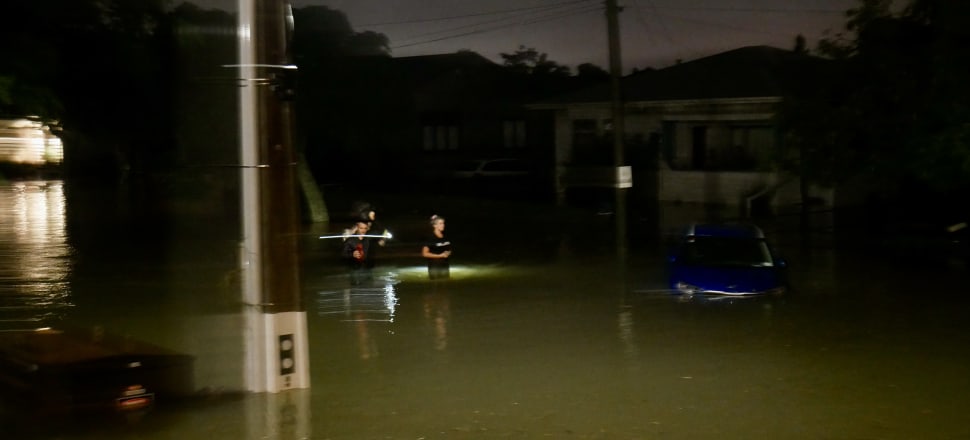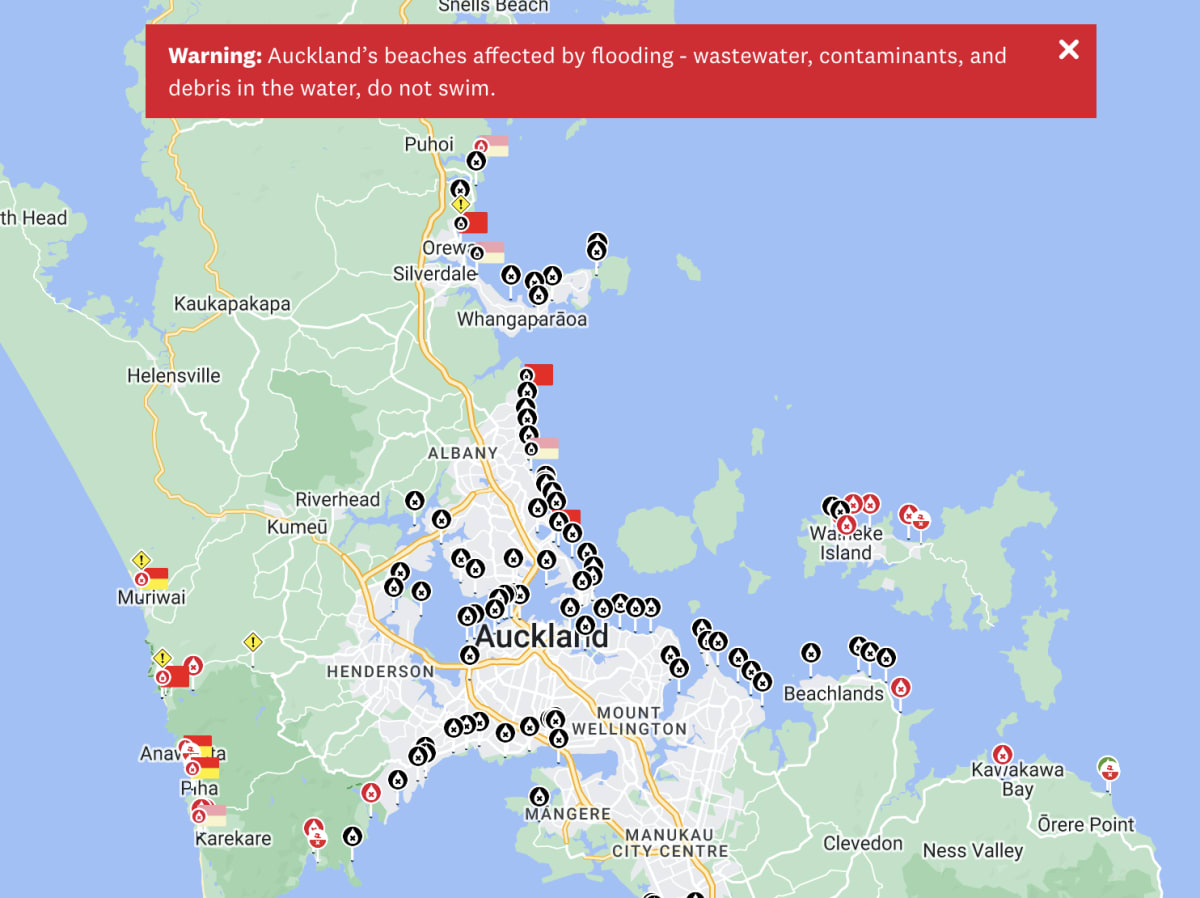
While Watercare says it will soon have the wastewater system back in working order, urban beaches are likely to be a no-go for days to come
Update: As of Wednesday morning at 10am, the ten wastewater pump stations are back in action. Watercare COO Mark Bourne said the continued rain overnight did not set back Watercare's recovery or have a major impact on its services.
When the waters rose, Auckland’s wastewater network and treatment plants were overwhelmed by stormwater, causing numerous overflows across the city.
Pump stations were flooded and electronic components damaged - leaving the network that moves Aucklanders' sewage out to massive treatment plants unable to cope with the waste of more than a million people.
The damage has led to signs on North Shore beaches warning away would-be swimmers. With the dangerous swells likely to accompany bad weather, swimmers in the waters of the usually idyllic East Coast Bays are now likely to be bathing in E. Coli.
READ MORE: * Why sluice-gates didn't open: 'We’re petrified it might happen again' * State of emergency: Auckland floods 'a wake-up call' * Tim Murphy: A self-destructing mayoralty * Auckland's historic flooding explained in five charts
The website Safeswim shows almost every beach on the isthmus and broader Auckland region has a water quality warning of ‘very high risk’, with fears of debris, contaminants and wastewater all potentially hiding in the waves.
Watercare said it is in the process of overriding Safeswim’s model to make sure all urban beaches remain black flagged.

And ahead of heavy rain on Tuesday night, council-controlled organisation Watercare put additional resources in place to respond, both on the ground and to liaise with customers.
Watercare chief operations officer Mark Bourne said Friday’s floods left around 3000 properties without water, and the system is “not out of the woods yet”.
“Our staff and contractors have been working flat tack to find and repair broken pipes and restore service, and we now believe all customers should have water on,” he said on Tuesday afternoon.
However, he cautioned Titirangi residents to prepare for intermittent supply in the coming days if more slips are uncovered or happen in the next bout of rain.
“Ten of our wastewater pump stations were severely flooded in the storm, damaging their electrics. Our teams have been working around the clock to get service restored. We managed to get six operational over the weekend and have this morning returned another two to service. We expect to get the other two back in service this evening.".
Bourne said when the pumps were not in operation, they overflowed into the environment - usually into an urban stream or waterway.
All of the 18 wastewater treatment plants are operational, although some are discharging more than usual to make sure they have the capacity for further flooding.
“There are a number of plants where contingency discharges are occurring to protect the plants from extreme inflows higher than their design capacities,” he said. “For example, at Helensville, where we’d normally only discharge treated wastewater on the outgoing tide, we are currently discharging at all tides to ensure the treatment plant can continue to operate.”
The following map shows the region's wastewater treatment plants, with the two in red taking 90 percent of the total:
There is work underway at the moment to sandbag the flooded pump stations and source back-up generators.
Without those pumps playing a part, it’s up to gravity to make sure the faecal matter of a million people gets to where it needs to go.
The pump stations contain a storage and collection chamber that lifts and distributes the wastewater for transport to its final destination.
Seeing to the waste of more than a million people requires labyrinthine infrastructure - including around 8,000 kilometres of pipes across the city. Stretched out in a line from the Sky Tower, they would reach Manila.
That wastewater system was first conceived in 1878 when the population hit 30,000 people. That was beginning of a fully-planned out sewerage system, replacing 500 holes in the ground, 1,200 boxes and pans, 150 water closets and 50 cemented cesspits.
An outbreak of typhoid in 1888 spurred planning for an established wastewater system to replace the ‘night cart’ - a horse-drawn cart that would come by the citiy's 3000 houses by night to pick up what was once called ‘nightsoil’.
An array of disparate systems were built across the city’s separate boroughs, many of which ejected directly into the ocean. Visible pollution around the Ōrākei Basin area galvanised city planners to come up with a better system.
Now, the old wastewater tanks of Ōrākei play home to the sea creatures of Kelly Tarlton’s, and 90 percent of the city's sewage ends up at the waste treatment plants at Rosedale or Mangere.
Mangere in particular plays a huge role in cleaning Auckland’s wastewater, with about three-quarters of the region’s waste going through its immense apparatus of treatment ponds and ultraviolet light tunnels.
But for the dirty water to reach Mangere, it must be sent on its way by a vast network of wastewater pump stations dotted around the city.
It’s here that the damage occurred on Friday night. The 10 wastewater pump stations that were severely flooded are a small percentage of the hundreds around the city.
Five were back in action by the end of the weekend, but another five remain out of action.
Two of these are in the North Shore, one in Westmere, one in Mangere and another in Waiuku.
Watercare expects most of these will be back running within the next few days, however it has begun sending tankers out to the Kitchener Rd pump in Waiuku to transport dirty water to the treatment plant by road.
Bourne said while the normal recommendation is to wait 48 hours before swimming at any urban beaches or waterways after heavy rainfall, this time things are a little more serious.
“For areas where our pump stations have been out of service, we can expect black water quality pins on Safeswim for at least 72 hours after they become operational again,” he said.
This means North Shore beaches are likely to be a no-go beyond mid-week.
For updates on the latest emergency information, go here.







